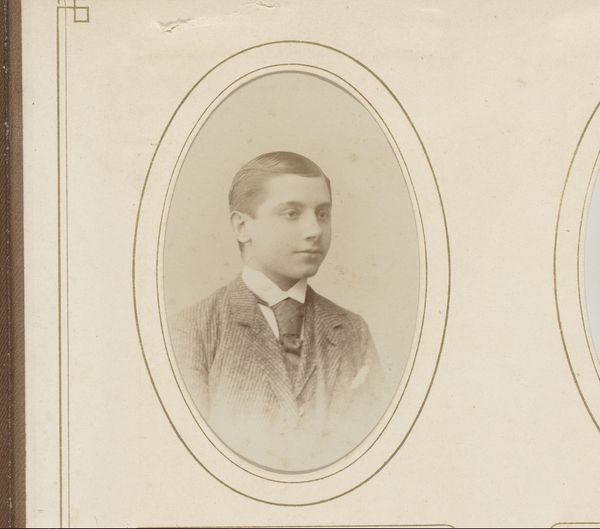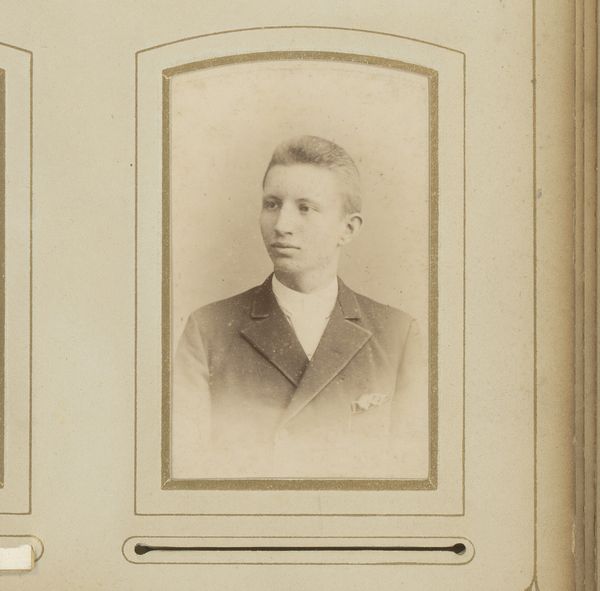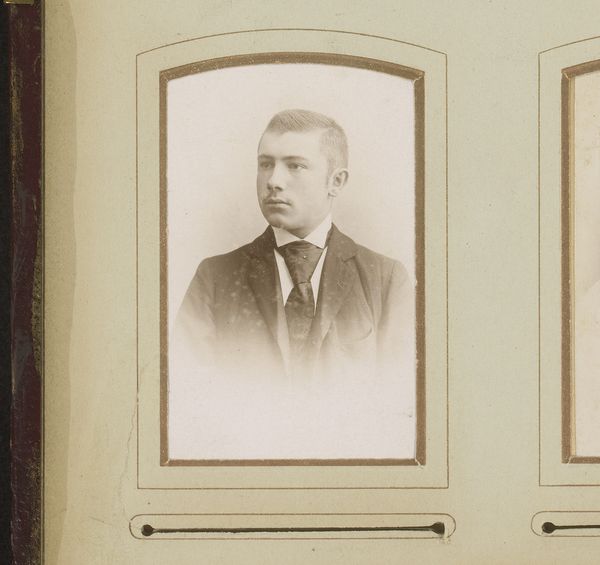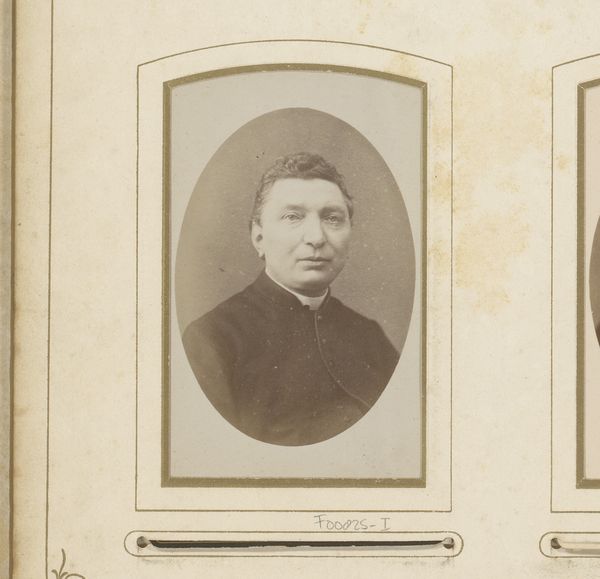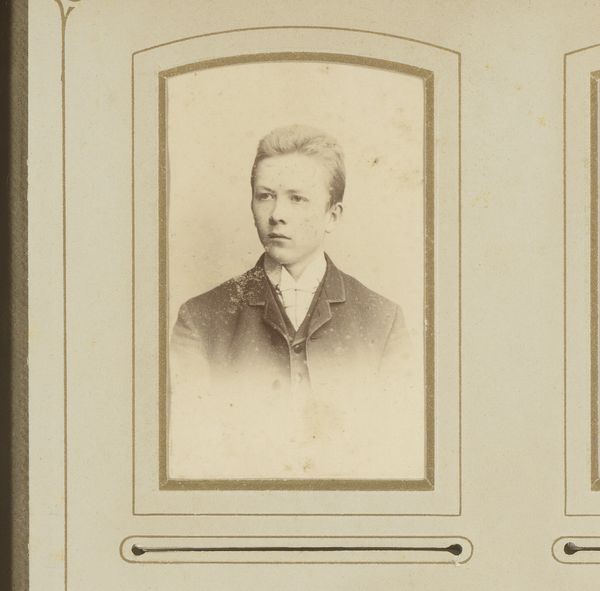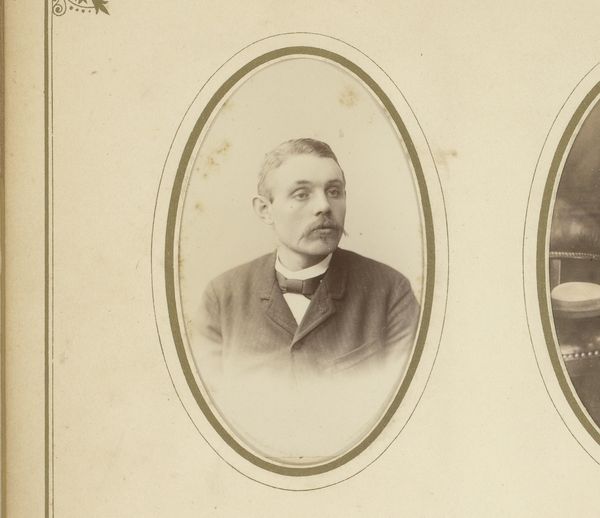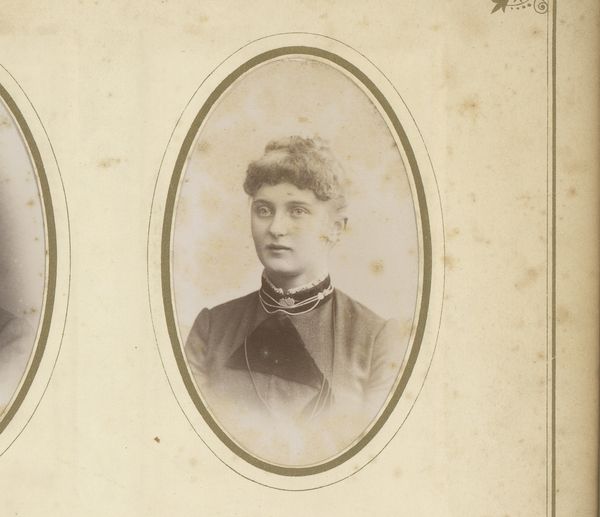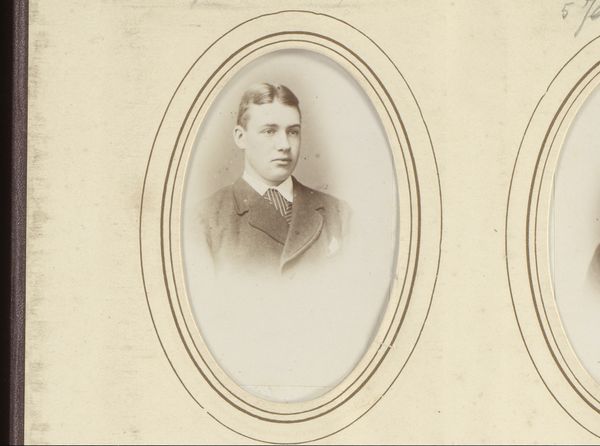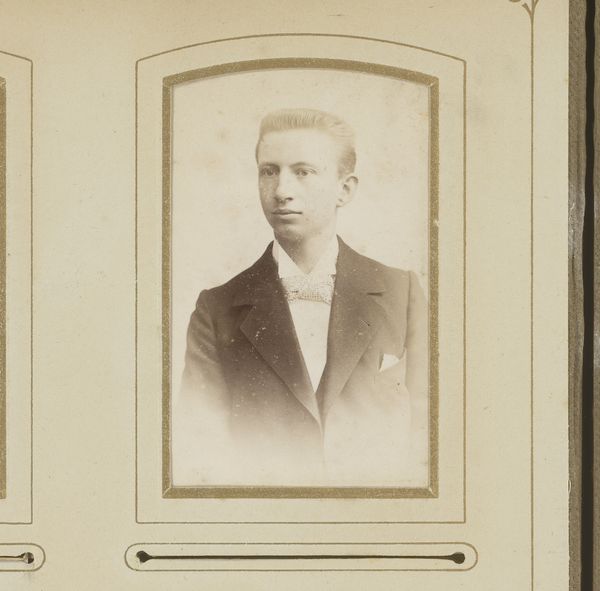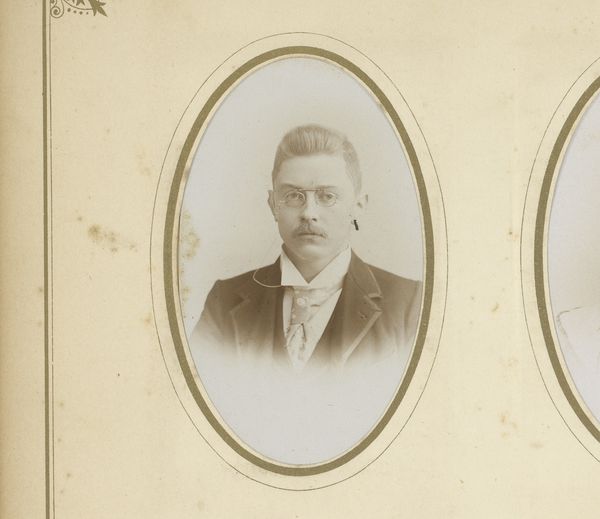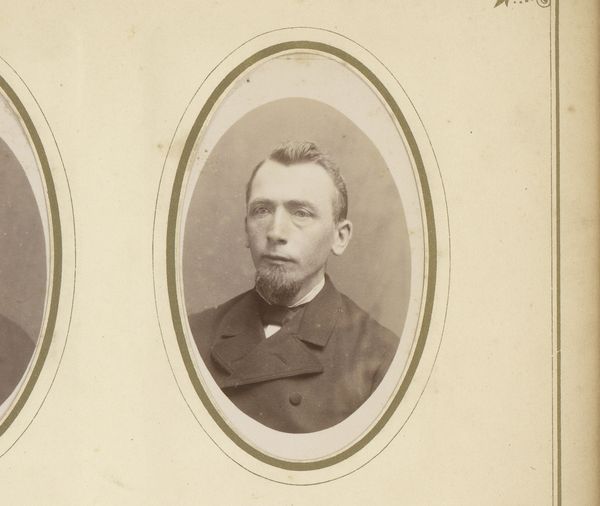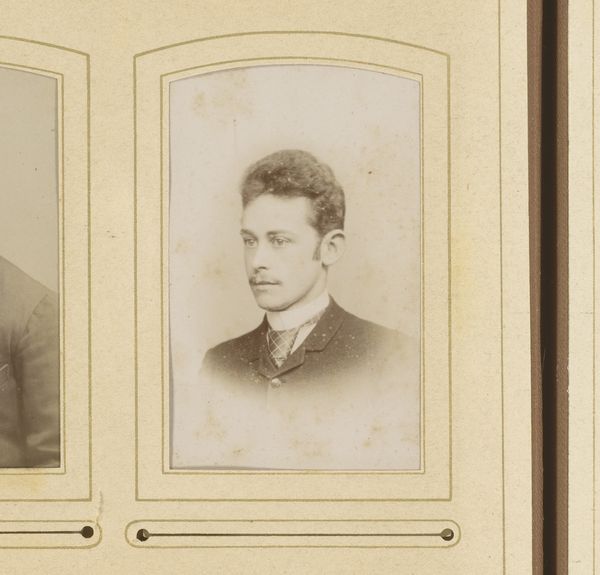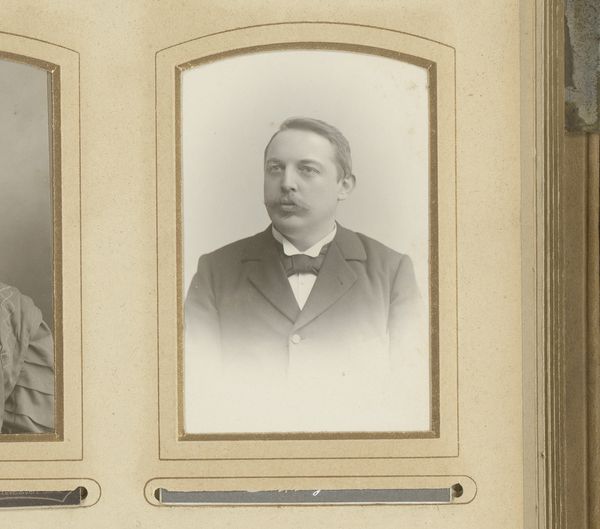
photography
#
portrait
#
photography
#
genre-painting
Dimensions: height 83 mm, width 53 mm
Copyright: Rijks Museum: Open Domain
Curator: Looking at this sepia-toned photograph immediately brings to mind an old curiosity shop, doesn't it? It’s officially titled "Portret van een jongen in matrozenpak" or "Portrait of a Boy in a Sailor Suit," and attributed to Gerrit Leenheer, sometime after 1900. What’s your take on it? Editor: There's a quiet melancholy to it, almost like a forgotten echo from another era. It is intimate and feels very personal—though, like peeking into a life where I'll never know the full story. The softness of the sepia tones lends it a nostalgic charm. Curator: Absolutely. The sailor suit, ubiquitous in that period, functioned almost like a symbolic uniform. More than just fashion, it represented a globalized view—the boy symbolically belonging to an age of maritime exploration and nascent internationalism. The anchor is clearly visible too, signifying hope and steadfastness, or even maritime adventure. Editor: I see a poignant blend of vulnerability and forced formality, maybe? His sideways glance suggests curiosity or a slight shyness that somehow feels like an affectation to be accepted for social status at this age. It reminds me how children of that era often mirrored miniature versions of adulthood. He doesn't seem quite sure where he fits in that costume. Curator: Exactly. These commissioned portraits offered more than a depiction of reality. They aimed to convey specific social values: prosperity, status, and adherence to particular social roles. This boy, poised on the cusp of adulthood, embodies this complex tension perfectly. His fixed, almost dreamlike, gaze adds another layer of interest, possibly capturing the anxieties of the age or perhaps the innocence of childhood abruptly halted. Editor: I get the feeling, thinking about the symbolic weight and pose here, it reflects not just individual ambition, but an underlying faith in the future—an era right before world-changing disruption. Does knowing the date frame our perspective differently about how we might feel in the aftermath of this, reflecting upon it through our lives today? Curator: Perhaps. What truly grips me about historical images is how symbols that once had a universal cultural reading slowly erode into multiple interpretations with the passage of time, colored by historical knowledge and personal memory. It makes us pause, re-evaluate our past, and connect differently. Editor: Nicely said! It’s also interesting how a simple photograph can turn into a window into the past—an unvarnished yet complex glimpse into social identity.
Comments
No comments
Be the first to comment and join the conversation on the ultimate creative platform.
